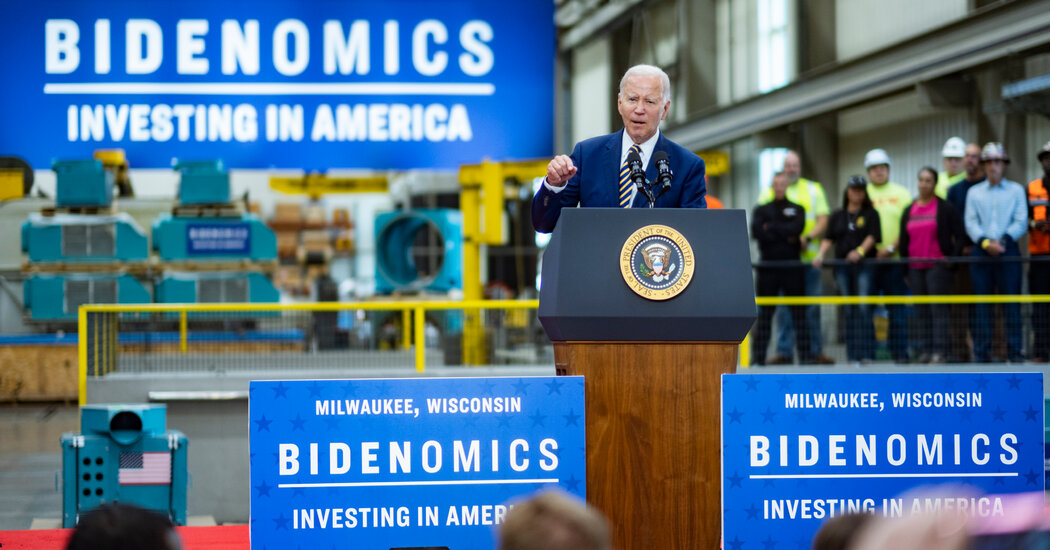Lucrative new tax breaks and other incentives for advanced manufacturing that President Biden signed into law appear to be reshaping foreign direct investment in the US economy, according to a White House analysis, with a much larger share of spending on new and expanding businesses shifting toward the US economy. Factories sector.
Data covering the first months following the activation of the two parts of that agenda shows that the main measure of foreign investment declined slightly from 2021 to 2022, after adjusting for inflation.
The numbers indicate that in the first months after the bills were signed, the hundreds of billions of taxpayer dollars that Biden is channeling toward manufacturing did not increase the total amount of foreign direct investment in the economy. Instead, the laws seem to have changed where foreign investment is directed.
a New analysis The report by the White House Council of Economic Advisers shows that the composition of what is known as capacity-enhancing spending on new structures or expansions of existing structures has shifted rapidly toward factories, in line with one of Mr. Biden’s top economic goals.
The analysis shows that two-thirds of foreign direct investment, excluding corporate acquisitions, was in manufacturing in 2022. This is more than double the average share from 2014 to 2021.
This increase is relatively small in the context of the overall economy. But administration officials see it as an encouraging sign of the lure of multinational corporations to America with Mr. Biden’s industrial policy agenda. Last year, the analysis suggests, spending on construction on new manufacturing facilities in the US increased much faster than it did in England, Europe or other rich 7 nations.
Administration officials say the Commerce Department’s survey of new foreign investment indicates that investors pouring money into US factories are largely concentrated in the United Kingdom and continental Europe, along with Canada, Japan and South Korea. Half of the 1% of investment seems to be related to China.
This foreign investment flows largely into computer and electronics manufacturing, particularly semiconductors, which have been the focus of a bipartisan industrial policy bill that Biden signed into law in the summer of 2022. Biden also signed the climate and health bill and taxes. Later that summer, this included large new manufacturing subsidies for renewable energy technology.
Since signing into law the companies have announced a wave of new investments planned in the US. The administration estimates these funds at more than $500 billion. They include semiconductor plants in Arizona, advanced battery facilities in Georgia, and much more. Many of the announced projects are from foreign companies, such as Taiwan’s TSMC.
Administration officials say that shifting investment toward the factory sector — even if the overall level of investment remains unchanged — could lead to positive spillover effects on the economy. The White House analysis points to higher wages in manufacturing jobs and potential increases in productivity from foreign firms sharing knowledge with existing domestic manufacturers.
“FDI in manufacturing not only helps us build this vital sector in key pivotal areas of the Biden economy, such as semiconductors and clean energy,” said Jared Bernstein, who chairs the Council of Economic Advisers. “It also allows us to learn valuable productivity lessons from global companies in these and other areas.”
